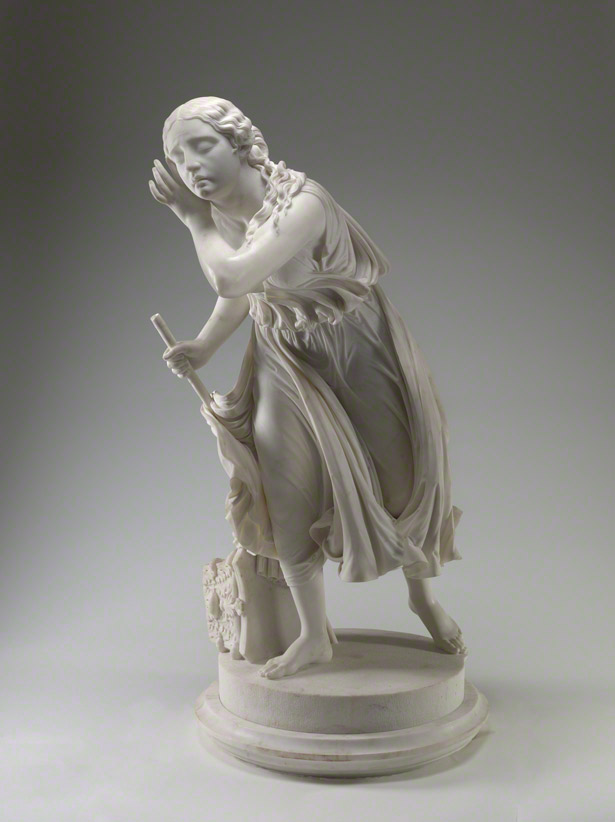
What stories do ruins tell? The Forum at Pompeii with Vesuvius in the Distance, 1841, Christen Schjellerup Købke. Oil on canvas, 27 7/8 x 34 5/8 in. The J. Paul Getty Museum, 85.PA.43
Having traveled to countless archaeological excavations—and heard, overheard, or given tours at archaeological sites from diverse cultures—I am often struck by what narratives about the ancient world grab people’s imagination. Whether it be hair-raising mythological stories brought to life by the ruins, such as in the case of the Minotaur who’s often the focus of popular tours at the labyrinthine palace at Knossos from Minoan Crete, or a cataclysmic natural disaster, such as the eruption of Vesuvius in the Bay of Naples in A.D. 79 that, quite literally, sealed the fate of the inhabitants of the important centers of Pompeii and Herculaneum, one thing is clear: ancient monuments and their ruins speak to people in disparate ways.
Some of the many narratives that have developed around the ruins of Pompeii are the subject of the exhibition The Last Days of Pompeii: Decadence, Apocalypse, Resurrection. This is not your average Pompeii exhibition, with the usual focus on daily life or artifacts discovered during excavations of the site. Many of us have seen those exhibitions and have been moved by the casts of victims suffocated by ash, and perhaps even shocked to learn about certain practices of the ancients—that inhabitants of Pompeii used urine to bleach their togas, for example.

Amplified sorrow: The Dog from Pompeii (detail), 1991, Allan McCollum. Polymer-modified Hydrocal®, 20 7/8 x 20 7/8 x 20 7/8 in. Courtesy of the Artist and Friedrich Petzel Gallery, New York
Instead, much to my delight, the exhibition focuses on the legacy of Pompeii in the popular imagination since the buried city’s rediscovery in 1748 under several meters of ash and pumice. It’s appropriate that this exhibition coincides with National Archaeology Day this Saturday, October 20, because it explores a fundamental truth about archaeology: that the stories we weave around ruins and remains say as much about ourselves as they do about the past.
As suggested by the exhibition title, the show is organized around the themes of decadence, apocalypse, and resurrection, rather than chronologically. Each section includes a variety of works in different media, including sculpture, painting, photography, film, and text. From Fuseli and Kaufmann to Dalí, Duchamp, Rothko, and Warhol, many notable artists have drawn inspiration from Pompeii. But each artist takes away a different meaning, or develops his or her own narrative, in response to the tumultuous history of this fascinating archaeological site.
Pompeii is constantly being reinvented, reminding those of us who study and write about the ancient world not to get too comfortable with the narratives we create. Yet the variety of narratives in the exhibition also reminds us of the myriad benefits of studying the human past through art, archaeology, and texts. As this exhibition vividly demonstrates, there is something for everyone to respond to and lessons to be learned from antiquity, as long as we approach it with open minds and hearts.

And if it happened to us? Nydia, the Blind Girl of Pompeii, model 1855, carved 1860, Randolph Rogers. Marble, 54 in. high. National Gallery of Art, Washington, Patrons’ Permanent Fund 2000.85.1. Courtesy National Gallery of Art, Washington
Text of this post © Cynthia Colburn. All rights reserved.




A beautiful and thoughtful analysis. I found the exhibit stunning, and I appreciated the anachronistic arrangement of art and artifacts to bring the themes of the exhibit into clearer focus to the lay observer. Well done!